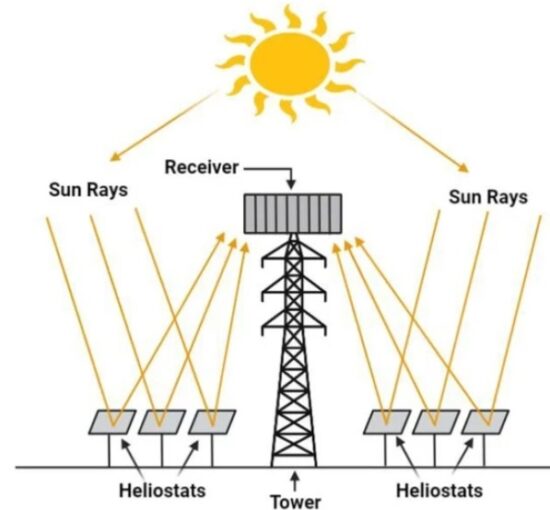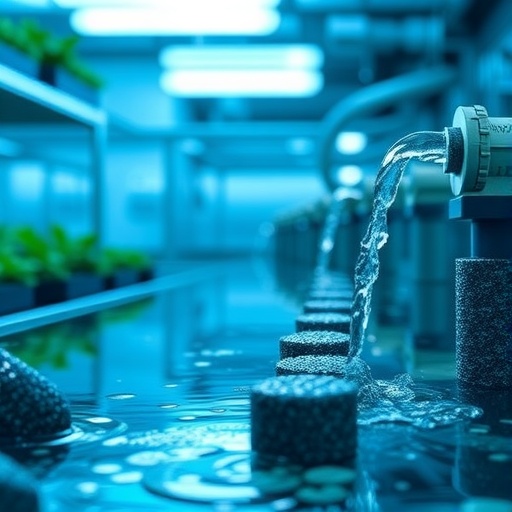Solar Panel Design Concentrates Sunlight for More Power – IEEE Spectrum

Report on an Advanced Micro-Concentrated Photovoltaic System and its Contribution to Sustainable Development Goals
A recent technological development by researchers at the Fraunhofer Institute for Solar Energy Systems (Fraunhofer ISE) in Freiburg, Germany, has produced a prototype micro-concentrated photovoltaic (micro-CPV) solar panel. This report details the innovation’s technical specifications, performance metrics, and its significant potential to advance several United Nations Sustainable Development Goals (SDGs).
Technological Innovation and Alignment with Sustainable Development Goals
The Fraunhofer ISE design overcomes previous challenges in micro-CPV technology, such as material degradation and the need for active cooling systems. The innovation’s core principles are directly aligned with fostering a sustainable future as outlined by the SDGs.
SDG 7: Affordable and Clean Energy
The primary impact of this technology is on ensuring access to affordable, reliable, and sustainable modern energy for all.
- Increased Efficiency: By achieving a conversion efficiency of up to 36%, the panels generate significantly more power from the same amount of sunlight compared to conventional panels (19-24%), making solar energy a more potent clean energy source.
- Cost Reduction Potential: The design utilizes low-cost materials and standard manufacturing processes, which could lower the overall cost of solar installations, thereby increasing the affordability and accessibility of clean energy.
SDG 9: Industry, Innovation, and Infrastructure
The project is a model of sustainable industrial innovation, building resilient infrastructure and fostering technological progress.
- Innovative Manufacturing: The assembly process is designed for use with standard high-speed pick-and-place machines, integrating cutting-edge renewable technology with existing industrial infrastructure.
- Advanced Materials: The use of silicone-on-glass lenses and glass substrates demonstrates innovation in material science for sustainable applications.
SDG 12: Responsible Consumption and Production
The technology promotes sustainable production patterns through significant resource efficiency.
- Reduced Material Consumption: The design is estimated to use less than one-thousandth of the expensive semiconductor materials required by standard solar panels.
- Lifecycle Impact: This reduction in resource consumption and energy in manufacturing points to a lower environmental impact across the entire product lifecycle, a key target of SDG 12.
Technical Specifications and Performance Analysis
The prototype demonstrates a substantial leap in solar panel performance through a novel design approach.
Design and Manufacturing Process
- Concentrating Lenses: The system uses an array of planoconvex lenses, made from low-cost silicone adhered to a glass surface, to focus sunlight onto small, highly efficient photovoltaic chips.
- Multi-Junction Cells: The design incorporates five-junction solar cells, which capture energy from a wider spectrum of sunlight wavelengths.
- Passive Thermal Management: The chips are mounted on a glass substrate that effectively dissipates heat, eliminating the need for complex and costly active cooling systems.
- Scalable Assembly: The components are assembled using standard, high-volume manufacturing methods common in the display industry, suggesting a clear path to mass production.
Performance and Efficiency Results
Outdoor testing conducted over a one-year period confirmed the system’s high performance and durability.
- Peak Efficiency: The panel achieved a 36% conversion efficiency under Concentrator Standard Testing Conditions (CSTC).
- Real-World Efficiency: In real-world conditions, the panel demonstrated median conversion efficiency values between 31.4% and 33.6%.
- Durability: No significant degradation in performance or materials was observed after the year-long testing period.
A potential economic consideration is the requirement for a dual-axis tracking mechanism to ensure the lenses remain focused on the sun, which adds cost to an installation. However, the significant boost in energy output may offset this expense.
Conclusion: Advancing Climate Action (SDG 13) and Sustainable Communities (SDG 11)
The development of this high-efficiency micro-CPV technology represents a critical advancement in the fight against climate change (SDG 13). By extracting approximately 50% more power from sunlight, these panels can accelerate the transition away from fossil fuels. This makes renewable energy a more viable and powerful option for building sustainable cities and communities (SDG 11). The planned commercialization of the technology through the spin-off company, Clearsun Energy, marks a decisive step toward deploying this innovation at scale to help achieve global sustainability targets.
1. Which SDGs are addressed or connected to the issues highlighted in the article?
-
SDG 7: Affordable and Clean Energy
The article’s central theme is the development of a new solar panel technology that is more efficient and potentially cheaper to produce. This directly supports the goal of increasing access to affordable, reliable, sustainable, and modern energy for all. By creating a panel that “extracts about 50 percent more power from the sun” and could “cost less to build,” the technology makes solar power “even more attractive as an alternative to other sources.”
-
SDG 9: Industry, Innovation, and Infrastructure
The article details a significant technological innovation from the Fraunhofer Institute for Solar Energy Systems. It describes a novel “micro-concentrated photovoltaic (micro-CPV) solar panel” that represents an advancement in scientific research. Furthermore, it highlights how this innovation can be integrated into industrial processes by using “standard high-volume manufacturing processes already in use,” thus upgrading technological capabilities.
-
SDG 12: Responsible Consumption and Production
The new solar panel design promotes sustainable production patterns. The article explicitly states that the design “uses less than one-thousandth the expensive semiconductor materials required by standard panels.” This focus on resource efficiency and the use of “low-cost material” like silicone aligns with the goal of achieving sustainable management and efficient use of natural resources. The article also mentions that this could lead to a “lower environmental impact across the entire life cycle.”
-
SDG 13: Climate Action
While not mentioned by name, the entire purpose of improving solar technology is to combat climate change by providing a viable and increasingly efficient alternative to fossil fuels. By boosting the efficiency and reducing the cost of solar panels, this innovation directly contributes to climate change mitigation efforts, which is the core of SDG 13.
2. What specific targets under those SDGs can be identified based on the article’s content?
-
SDG 7: Affordable and Clean Energy
- Target 7.2: By 2030, increase substantially the share of renewable energy in the global energy mix. The article’s technology, which boosts conversion efficiency from a typical 19-24% to 36%, directly contributes to making solar energy a more powerful and substantial part of the energy mix.
- Target 7.a: By 2030, enhance international cooperation to facilitate access to clean energy research and technology… and promote investment in energy infrastructure and clean energy technology. The research by a German institute (Fraunhofer ISE) published in the “IEEE Journal of Photovoltaics” is an example of sharing clean energy research. The plan to “spin out a company, Clearsun Energy, to bring this technology to market” is a direct effort to promote investment in clean energy technology.
-
SDG 9: Industry, Innovation, and Infrastructure
- Target 9.4: By 2030, upgrade infrastructure and retrofit industries to make them sustainable, with increased resource-use efficiency and greater adoption of clean and environmentally sound technologies. The article describes a clean technology (solar panel) with increased resource-use efficiency (“less than one-thousandth the expensive semiconductor materials”) and a design that can be assembled using “standard high-speed pick-and-place machine” processes.
- Target 9.5: Enhance scientific research, upgrade the technological capabilities of industrial sectors… encouraging innovation. The entire article is a report on a successful scientific research project that has upgraded the technological capabilities of photovoltaics. The creation of a prototype and testing its performance over a year demonstrates a commitment to research and development.
-
SDG 12: Responsible Consumption and Production
- Target 12.2: By 2030, achieve the sustainable management and efficient use of natural resources. The design’s dramatic reduction in the use of “expensive semiconductor materials” is a clear example of working towards this target.
3. Are there any indicators mentioned or implied in the article that can be used to measure progress towards the identified targets?
-
Conversion Efficiency
The article provides a clear, quantifiable indicator of technological progress. It states the new panel achieved “36 percent conversion efficiency” under test conditions and “31.4 percent to 33.6 percent” in real-world use, which is a significant improvement over the “19 percent to 24 percent conversion efficiency” of current commercial panels. This directly measures progress towards a more efficient renewable energy source (Target 7.2).
-
Resource Efficiency
A specific indicator for resource efficiency (Target 12.2) is mentioned: the design “uses less than one-thousandth the expensive semiconductor materials required by standard panels.” This provides a measurable comparison of resource consumption between the new and existing technologies.
-
Technology Durability and Performance
The article implies an indicator for the technology’s reliability. It notes that after a “year-long test, the team did not observe any significant degradation in the panel or its performance.” The rate of degradation over time is a key performance indicator for infrastructure investments.
-
Commercialization and Investment
An indicator of progress towards promoting investment in clean energy (Target 7.a) is the formation of a new enterprise. The article states that the “Fraunhofer ISE team is currently spinning out a company, Clearsun Energy, to bring this technology to market.” The establishment and success of such companies can be tracked as a measure of innovation adoption.
4. SDGs, Targets, and Indicators Analysis
| SDGs | Targets | Indicators Identified in the Article |
|---|---|---|
| SDG 7: Affordable and Clean Energy | 7.2: Increase substantially the share of renewable energy in the global energy mix. | Solar panel conversion efficiency increased to 36% from the typical 19-24%. |
| SDG 7: Affordable and Clean Energy | 7.a: Promote investment in energy infrastructure and clean energy technology. | Formation of a spin-off company, Clearsun Energy, to commercialize the technology. |
| SDG 9: Industry, Innovation, and Infrastructure | 9.5: Enhance scientific research and upgrade the technological capabilities of industrial sectors. | Development and successful year-long testing of a new micro-CPV solar panel prototype. |
| SDG 9: Industry, Innovation, and Infrastructure | 9.4: Upgrade industries to make them sustainable, with increased resource-use efficiency and adoption of clean technologies. | Design allows for assembly using standard manufacturing processes and has a lower environmental impact. |
| SDG 12: Responsible Consumption and Production | 12.2: Achieve the sustainable management and efficient use of natural resources. | The new design uses “less than one-thousandth the expensive semiconductor materials” of standard panels. |
Source: spectrum.ieee.org

What is Your Reaction?
 Like
0
Like
0
 Dislike
0
Dislike
0
 Love
0
Love
0
 Funny
0
Funny
0
 Angry
0
Angry
0
 Sad
0
Sad
0
 Wow
0
Wow
0



























;Resize=805#)



















































